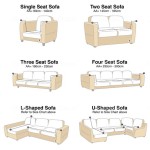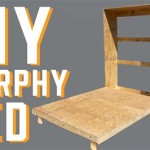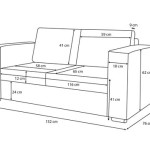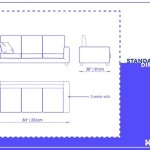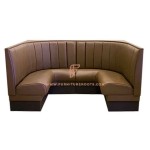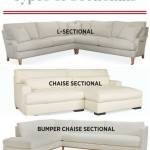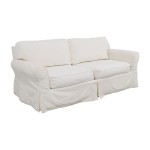Leather Sofa Quality Guide: A Comprehensive Analysis
A leather sofa is a significant investment in any home. It promises comfort, style, and durability, but the vast range of options available can make choosing the right one a daunting task. Understanding the factors that contribute to leather sofa quality is crucial for making an informed decision and ensuring long-term satisfaction. This guide provides a detailed examination of the key aspects that define a high-quality leather sofa, enabling potential buyers to navigate the market with confidence.
Leather Type and Grade: The Foundation of Quality
The type and grade of leather used in a sofa’s construction are arguably the most significant determinants of its overall quality and longevity. Leather is not a uniform material; it varies in its natural characteristics, processing methods, and resulting durability. Different grades of leather offer distinct levels of resistance to wear and tear, as well as unique aesthetic qualities.
Full-Grain Leather: This is the highest grade of leather available. It is derived from the top layer of the hide, which retains all the natural grain markings and imperfections. Full-grain leather is not sanded or buffed to remove these marks, resulting in a more durable and character-rich material. Over time, full-grain leather develops a patina, a desirable sheen and softness that enhances its appearance. Sofas made with full-grain leather are the most expensive due to the minimal processing involved and the superior quality of the hide used. They require proper care and conditioning to maintain their quality and prevent cracking.
Top-Grain Leather: This is the second-highest grade of leather. Like full-grain leather, it comes from the top layer of the hide, but it undergoes a light sanding or buffing process to remove imperfections and create a more uniform appearance. This process makes top-grain leather slightly less durable than full-grain leather, as it removes some of the natural protective layer. However, it is still a high-quality material that offers good resistance to wear and tear. Top-grain leather is often treated with a protective coating, which can make it more resistant to stains and scratches. It is generally less expensive than full-grain leather, making it a popular choice for high-quality sofas.
Split-Grain Leather: This leather is made from the lower layers of the hide, which are separated from the top layers. Split-grain leather is generally less durable and less expensive than full-grain and top-grain leather. It is often used for the sides and back of sofas, where wear and tear are less likely. Split-grain leather usually undergoes extensive processing, including embossing and coating, to mimic the appearance of higher-grade leathers. This can result in a more uniform appearance, but it also detracts from the leather's natural character and breathability.
Bonded Leather: This is the lowest grade of leather. It is made from leftover scraps of leather that are shredded and bonded together with polyurethane or latex. Bonded leather has a significantly shorter lifespan than other types of leather and is more prone to cracking and peeling. It is often used in lower-priced furniture due to its low cost. Bonded leather lacks the durability and aesthetic appeal of higher-grade leathers and is not considered a good choice for a long-lasting sofa.
Beyond the type of leather, understanding leather "aniline" and "protected" designations is also crucial. Aniline leather is dyed entirely with soluble dyes without covering the surface with a polymer coating. This preserves the natural surface of the leather, showcasing its unique markings, but makes it more susceptible to staining and fading. Protected leather, on the other hand, has a protective coating applied to the surface, offering greater resistance to stains, scratches, and fading. While it may not have the same natural appearance as aniline leather, it is a more practical choice for households with children or pets.
Frame Construction and Support: The Underlying Structure
The frame of a leather sofa provides the foundation for its comfort, durability, and overall structural integrity. A high-quality frame ensures that the sofa will withstand years of use without sagging, creaking, or warping. The materials and construction techniques used in the frame are critical factors to consider.
Wood Frame Material: Hardwoods such as oak, maple, and beech are the preferred materials for sofa frames due to their strength and durability. Kiln-dried hardwoods are particularly desirable because the drying process removes moisture, preventing warping and cracking over time. Softwoods, such as pine, are less expensive but are also less durable and more prone to damage. Avoid frames made from particleboard or plywood, as these materials are not as strong and can break down over time.
Frame Joinery: The way in which the frame components are joined together is crucial for its stability. Look for frames that are joined using techniques such as mortise-and-tenon, dovetail, or corner blocking. These joints are stronger and more durable than simple staples or screws. Corner blocks are triangular pieces of wood that are glued and screwed into the corners of the frame to provide additional support. Mortise-and-tenon joints involve fitting a projection (tenon) on one piece of wood into a corresponding hole (mortise) on another piece. Dovetail joints are interlocking joints that provide exceptional strength and resistance to pulling forces. These types of joinery ensure that the frame will remain sturdy and prevent wobbling or creaking.
Suspension Systems: The suspension system supports the cushions and provides the sofa's springiness. There are several types of suspension systems commonly used in sofas, each with its own advantages and disadvantages. Eight-way hand-tied springs are considered the gold standard for sofa suspension. This system involves individually tying each spring to the frame and to adjacent springs, creating a supportive and responsive seating surface. Sinous springs, also known as no-sag springs, are pre-assembled metal springs that are attached to the frame in a series of curves. They are less expensive than eight-way hand-tied springs but still provide good support. Webbing is a system of interwoven straps that are stretched across the frame. It is a less expensive option but can sag over time if the webbing is not of high quality. The choice of suspension system will depend on the desired level of comfort and support, as well as the budget.
Buyers can assess frame quality to some extent by lifting a corner of the sofa. A well-constructed frame will feel solid and substantial, with minimal flexing or creaking. Additionally, inspecting the visible parts of the frame, such as the legs and seams, can reveal the quality of the materials and joinery used.
Cushion Fill and Stitching: Comfort and Appearance
The cushions of a leather sofa are essential for providing comfort and support. The type of fill used in the cushions, as well as the quality of the stitching, contribute significantly to the sofa’s overall feel and appearance.
Cushion Fill Options: Foam, down, and fiber are the most common materials used for cushion fill. High-density foam provides firm support and retains its shape well over time. Down cushions are soft and luxurious but require more maintenance to prevent clumping. Fiber cushions are a less expensive alternative to down and offer a good balance of comfort and support. A combination of these materials is often used to create the ideal cushion fill. For example, a foam core wrapped in down or fiber provides both support and softness. The density and resilience of foam are critical factors; higher density foams offer greater support and durability. The presence of down feathers usually increases the price.
Stitching Quality: The stitching on a leather sofa should be neat, even, and strong. Look for tight, consistent stitches that are securely fastened. Double stitching is a sign of high-quality construction, as it provides extra reinforcement and prevents seams from splitting. Pay attention to the stitching around corners and edges, as these areas are prone to wear and tear. Poorly stitched seams can detract from the sofa's appearance and lead to premature failure. The use of heavy-duty thread is also essential for ensuring the longevity of the stitching, particularly on areas subject to heavy use.
Cushion Construction: The way in which the cushions are constructed also affects their comfort and durability. Look for cushions with zippered covers, which allow for easy cleaning and replacement of the fill. Channeling, a quilting technique that divides the fill into compartments, helps to prevent the fill from shifting and clumping. Some cushions are attached to the frame, while others are loose. Attached cushions provide a more streamlined look, but loose cushions can be flipped and rotated to distribute wear more evenly.
Consider the loft and resilience of the cushions. Cushions should bounce back to their original shape after being compressed, indicating good quality fill and construction. Examine how the cushion sits on the sofa, checking for even distribution and proper support.

Leather Sofa Furniture Guide How To Avoid Common Mistakes Tangible Interiors

Leather Sofa Guide Living Spaces

How To Spot Great Quality Leather Top Grain Vs Full

How To Spot Great Quality Leather Top Grain Vs Full

Sofa Guide For 2024 Reviews By Wirecutter

How To Spot Great Quality Leather Top Grain Vs Full

How To Spot Great Quality Leather Top Grain Vs Full

Your Ultimate Guide To Luxury Leather Furniture Colorado Homes Lifestyles

Your Guide To High Quality Leather Furniture Calgary

Sofa Guide For 2024 Reviews By Wirecutter

